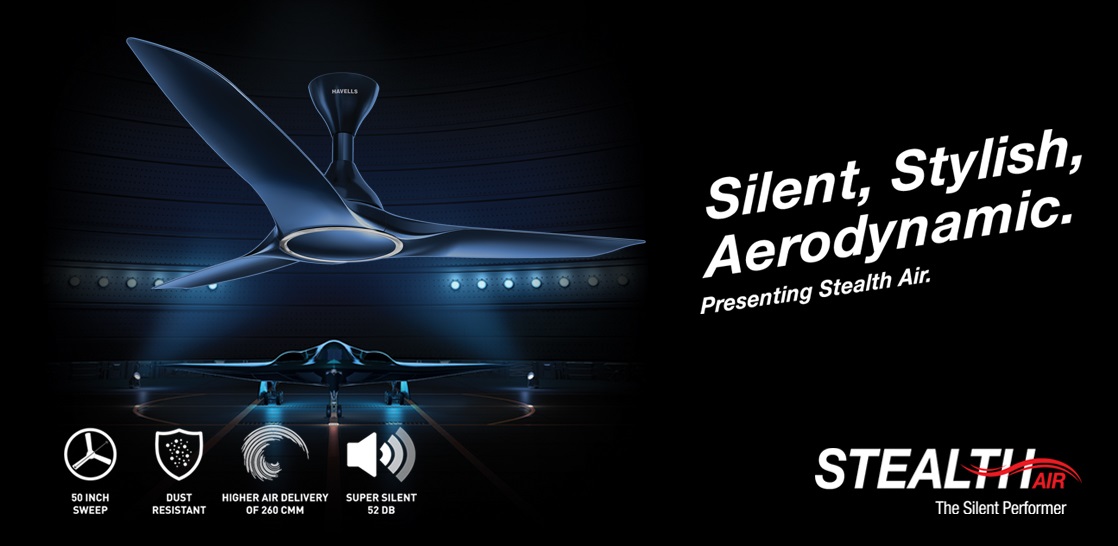Fans with Best-in-Class Air Delivery
Air Delivery – also called air supply or air flow – is something that we wish for while buying ceiling fans, or any other electrical device meant for air movement. However, we often don’t know the underlying factors that ascertain the airflow and efficiency of a fan. In fact, the amount of air that a fan moves each minute, directly impacts the level of its performance. We generally make our decision of buying, considering the looks of the fan, or the related brand.
For obvious reasons, a motor makes the primary factor that determines the power, efficiency and durability of a fan. Besides the motor, there are some other factors which work altogether to define the efficiency and air delivery of a ceiling fan. Considering these factors, along with your budget, personal preferences and requirements, can help you select a right ceiling fan for your space. Check out the given below points which can help you to determine the air delivery of a ceiling fan.
Blade Pitch – Blade pitch essentially refers to the angle at which the blades are set corresponding to the ground. In the world of fans, it is said that “the steeper the blade pitch, the more air a fan will move.” As a standard, the optimal blade pitch for a ceiling fan is between 12 and 15 degrees. For better understanding, you need to know that fan blades with a relatively flat pitch (between 10 and 12 degrees) don’t need a very large motor to reach a high speed, while a steeper blade pitch (like 14 to 15 degrees) does need a more powerful motor to achieve the same speed. Thus, the blade pitch and the power of the motor must complement each other for the best air-delivery.
Blade Shape and Size – The blades of the fan should not be too long or too wide. Even if the fan features a large motor, bigger blades do not necessarily mean better air-delivery. The larger and wider blades may not be able to move as much air as small and narrow blades can move. Havells, the leading FMEG brand, has an extensive variety of technologically-advanced ceiling fans that offer optimum air-delivery even at a low voltage.
RPM – The RPM stands for revolutions per minute. In the terminology of fans, the RPM actually suggests how fast the blades spin at a particular speed. The faster the blades spin the more air they move, provided that the blades have the right pitch. Actually, to get the maximum air delivery, the fan should have different speed settings, ranging from low to very high. At the same time, one should note that faster rotations may provide superior air delivery but it also increases the noise level and beyond a point, it can become unbearable.
Height from Ceiling – To offer the best air delivery, the downward length of ceiling fans must be 10 to 12 inches. In case your ceiling fan is too close or too far from the ceiling, it won’t move as much air as it should to offer optimum air delivery.
Motor – Besides the above-mentioned factors, the motor is one of the most important features of a fan. However, all the factors need to work in alignment for the best results. As a rule, powerful motors are considered the best to offer maximum airflow, comfort and durability. Though expensive, a high-performance motor powered fan will provide the best return on investment, and will have a longer lifespan.
After understanding the factors behind ceiling fan air-delivery, you will now be in a better position to make a decision while buying ceiling fans. Seeing that market has numberless options for ceiling fans, you may consider the stylish range of ceiling fans from Havells. Infused with the latest technology, Havells ceiling fans are aesthetically designed to complement the interiors of your space, while offering the best-in-class air delivery.

